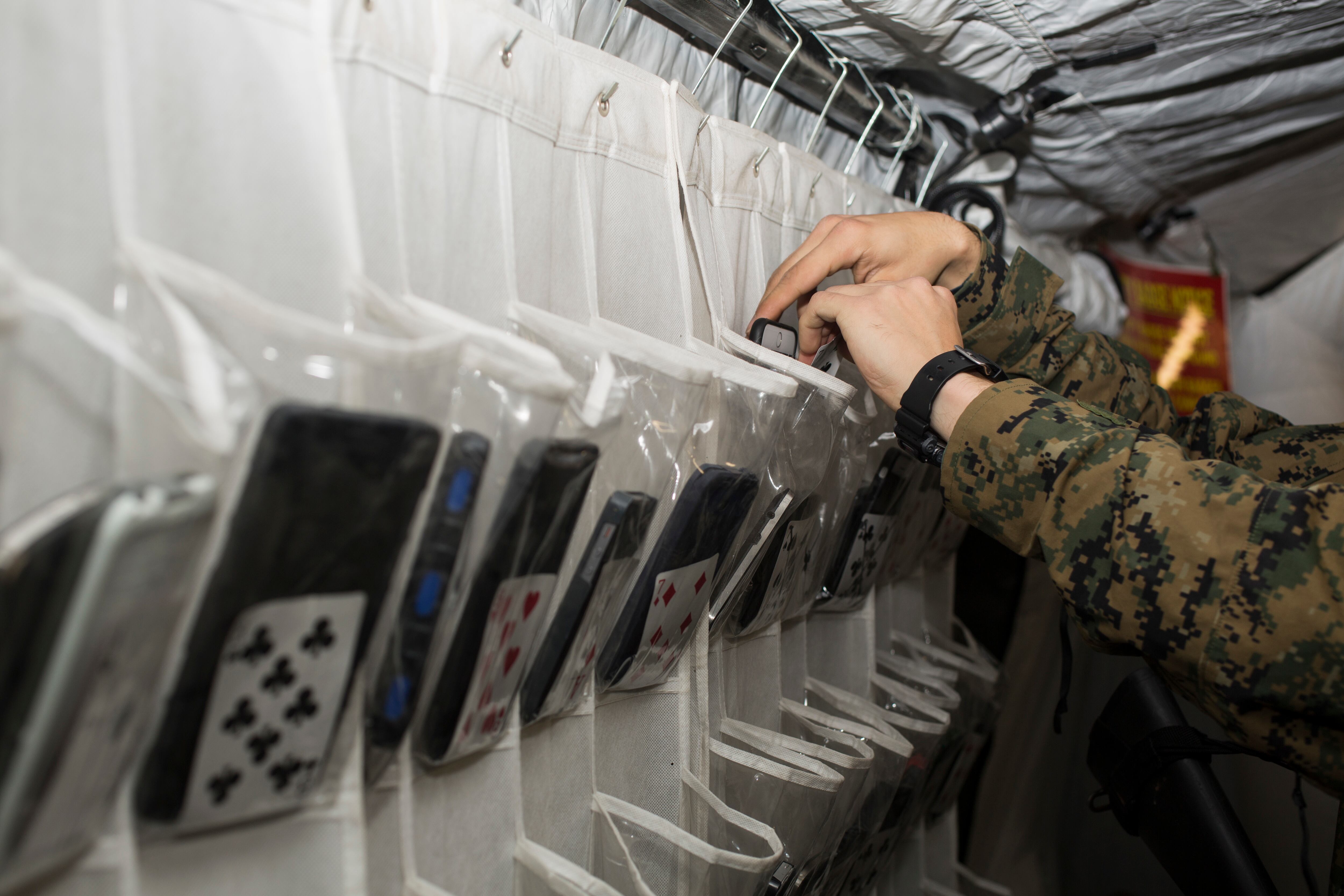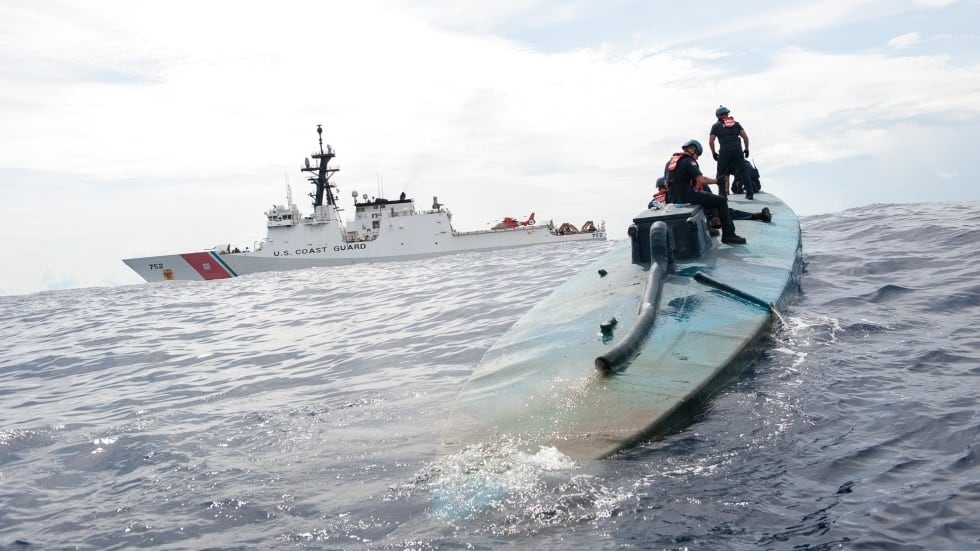While most of the Marine Corps shifts its focus toward the Pacific and competition against China, one group of Marines is focused on Europe.
Marines with II Marine Expeditionary Force spent nine days in November to prove they were more than capable of handling a threat from a great power in the European theater.
The exercise, known as MEFEX 21.1, thrusted the Corps' East Coast MEF into a war against a near-peer competitor as it invades a far northern European ally, like Norway.
The MEF brought roughly 1,200 Marines in “coordination” with the U.S. 2nd Fleet, alongside small contingents of NATO allies from Norway, France and Britain, to Fort A.P. Hill, Virginia, Fort Drum, New York, and Camp Lejeune, North Carolina, from Nov. 4 to Nov. 13 as part of the exercise.
RELATED

The 1,200 service members physically taking part in the exercise, along with a notional force of roughly 50,000 operated as a distributed force, adhering to the expeditionary advanced base concept, Marine Corps Commandant Gen. David Berger has championed since he took over the Corps.
The exercise was “model-driven” and “script supported,” according to a press release from II MEF, and focused on how the Corps could best ensure freedom of movement for the Navy as it operated in the contested waters of the notional Baltic and North Sea.
“This is very much indeed a joint combined exercise against a peer threat that involves both land operations as well as II MEF support to fleet commanders,” Lt. Gen. Brian Beaudreault, commander of II MEF, told reporters Nov. 13.
“The idea is not to have the Navy sitting off of the coast, just supporting the Marine Corps, it’s quite the reverse, it’s the Marine Corps, unlocking the ability of the Navy to maintain naval maneuver. I think that’s important in the Pacific theater … an it’s definitely important in the European theater,” he added.
The expeditionary advanced bases in Europe could be used for anti-submarine warfare, to attack surface vessels, provide refueling and rearming depots for Navy ships and aircraft or even conduct cyber warfare near the frontlines of a fight.
Marines would also be heavily involved with the fight on the ground, Beaudreault said, operating with the Army and allies to make up for some of the assets the Marine Corps has recently divested from like tanks.
‘Peel the onion back’
One question the MEF sought to answer was how to deconflict the complicated targeting responsibilities in a future joint domain fight, Beaudreault said.
The Marine Corps is increasing its use of the high mobility artillery rocket system, or HIMARS, and hopes to develop a missile capable of sinking ships.
Once the Marine Corps acquires the ability to sink ships from land-fired rockets, the military will have to figure out who gets to shoot what target in a future complicated battlefield.
“There might be five or six firing agencies who have that same common picture, all of which have a capability to address that same surface threat but the last thing we want are five independent units firing at that same target,” Beaudreault said.
This exercise has started to “peel the onion back on all the command and control required to actually make that shot happen,” Beaudreault added.
In addition to deconflicting the command and control over long-range fires, the MEFEX also worked on coordinating attacks at land and sea. A difficult task when the speed of a naval force can vary wildly from that of a ground force, the MEF commander said.
But, by fostering relationships between Marine Corps and Navy commanders and working on the timing in exercises the two forces came out better prepared for a future, land-sea advance, Beaudreault said.
“Second fleet sat inside and attended all of II MEF’s daily updates, our targeting and effects board and the commanders total at the end of the day,” the MEF commander said.
“So, I had really good situational awareness and understanding of the nature of the sea control fight,” he added.
Longest training convoy in recent Marine history
While the Marine Corps is discussing how to best support the logistical needs of forces dispersed in the Pacific, the logistical challenges in Europe, while more traditional, are still a challenge for the Marine Corps.
As part of exercise, II MEF wanted to ensure it had the capability of moving Marines and equipment over long distances using its vehicle transportation assets.
This led to Combat Logistics Regiment 27 conducting a 916-mile tactical convoy over three days: the longest such training convoy in recent Marine history, the MEF said.
“The convoy was incredibly important to the Marines and myself,” 1st Lieutenant Sofia Ripa, the convoy commander said in a MEF press release. “Not only was in an amazing opportunity to train … it demonstrated how we can surpass any limit,” she added.
Those are realistic distances for Marines to travel if they got in fight in the littorals of Northern Europe and the MEFEX proved the perfect opportunity for the MEF to take on that challenge in a learning setting instead of a real world fight, Beaudreault told reporters.
RELATED

The MEFEX 21.1 was just a start for putting the real-world application of the Corps’ new force design to the test.
The whole Corps is going through the experimental phase when it comes to force design and II MEF is no different, with hopes to conduct a combined exercise with the U.S. Sixth Fleet in the summer of 2021.
Beaudreault said that he’d like to conduct large-scale joint exercises on an annual basis, but with the priority of the Marine Corps being shifted to III MEF and I MEF, he feels that the exercise can be repeated once every two years, with smaller MEF only exercises occurring every six months.
“This really is about setting the tempo, to make sure that this headquarters can meet the expectations that we would have of our subordinate units,” the commander said.
“The only way we can do that is to exercise more frequently at a higher level, beyond what you’ve seen in the past,” he added.




